

William Stopford
Every SUV, ute and van discontinued in Australia in 2025
14 Minutes Ago
The Mazda MX-30 'M Hybrid' is billed as a forward-thinking and environmentally-friendly coupe-SUV style statement. What's it like?
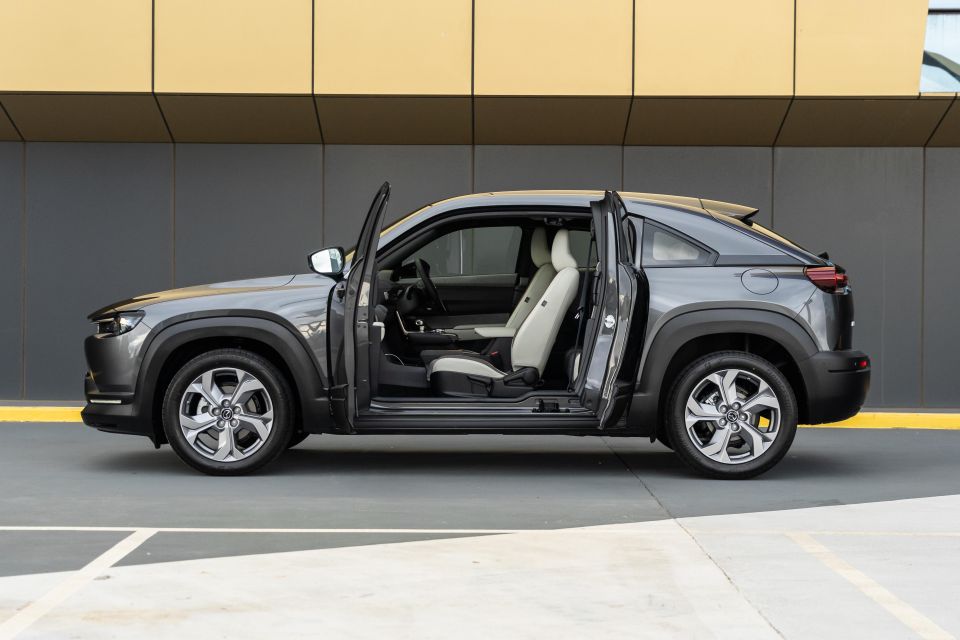
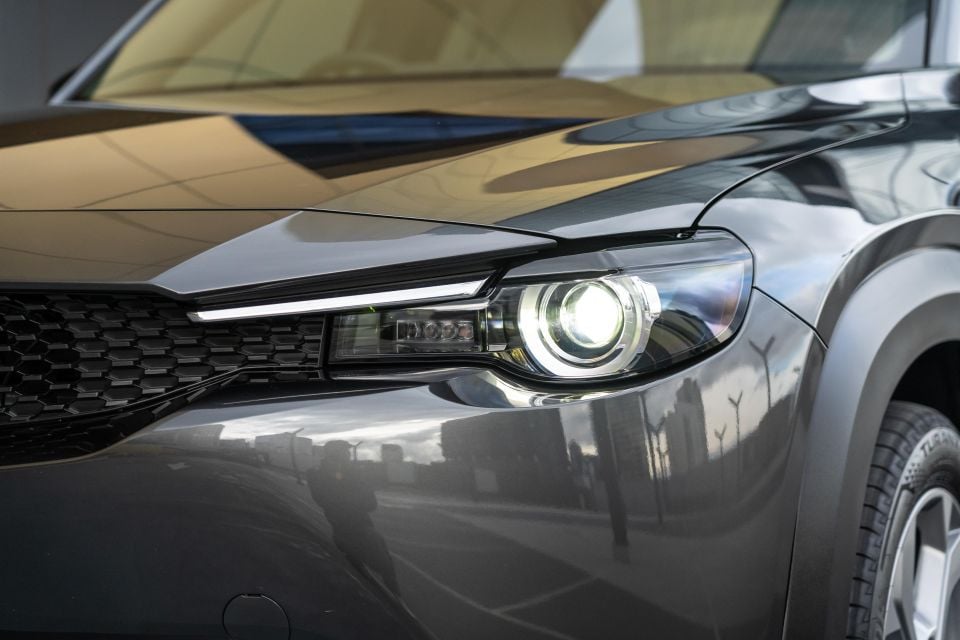

Senior Contributor
New from
$37,990
excl. on-roads

Senior Contributor
New from
$37,990
excl. on-roads


Senior Contributor
New from
$37,990
excl. on-roads

Senior Contributor
New from
$37,990
excl. on-roads
Quickly see how this car stacks up against its competition. Select any benchmark to see more details.
Where expert car reviews meet expert car buying – CarExpert gives you trusted advice, personalised service and real savings on your next new car.
The Mazda MX-30 is not an easy vehicle to categorise. Where does it fit within the company’s wider range? What are its competitors? Who’s it made for?
It’s the same size and has the same wheelbase as a CX-30 small SUV, but is rather more like a high-riding coupe in terms of design and interior space. Hence Mazda’s application of the coveted ‘MX’ moniker.
Such ambiguity in a car’s design is uncommon, and the main selling point. It makes an impression, and that’s before you swing open the ‘freestyle’ doors that nod to the Mazda RX-8 (or BMW i3) and hit the road.
Then there are the car’s environmentally-friendly credentials: its cabin uses recycled fabrics and sustainable cork trims, and it’s powered by what Mazda calls an ‘M Hybrid’ petrol engine. Plus, a full-electric one arrives in August.
The Mazda MX-30 kicks off at $33,990 before on-road costs for the entry level Evolve, which equates to a drive-away price around $38,300 depending on your State/Territory of residence.
Stepping into the mid-range Touring as driven here costs $36,490 ($40,800 drive-away), while the flagship Astina is priced at $40,990 ($46,000 drive-away).
Pun not intended, there’s crossover here with a lot of other Mazda products. For similar money to this mid-level MX-30 Touring you could have a CX-30 Touring, or a near-base CX-5 Maxx Sport. Or a Mazda 3 GT hatch. Or a base MX-5 convertible…
Competitors? One that comes to mind is the Toyota C-HR Koba Hybrid, another is the Volkswagen T-Roc 110TSI Style. Then there’s a top-end Nissan Juke Ti. All are similar money.

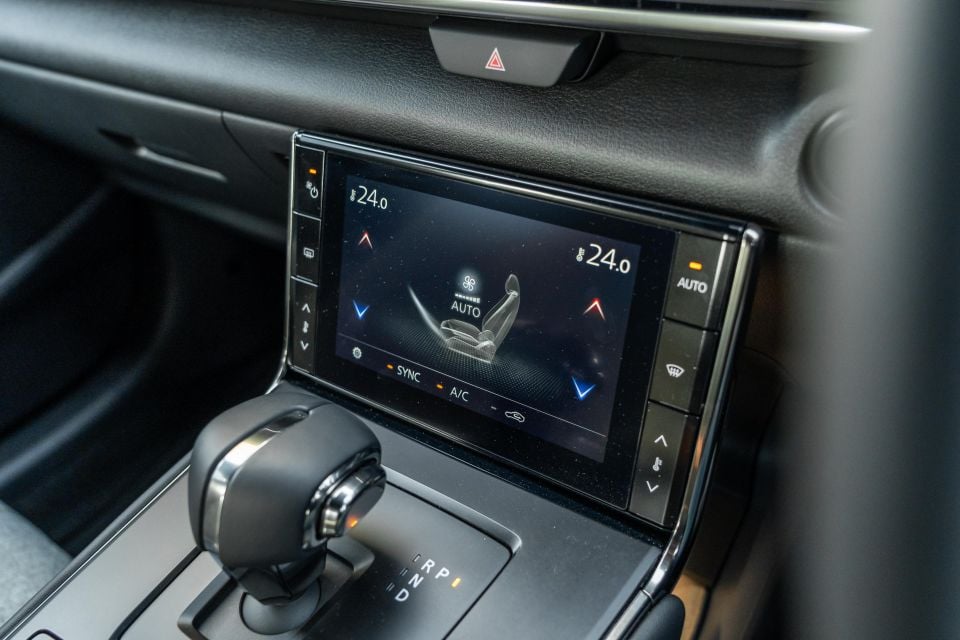
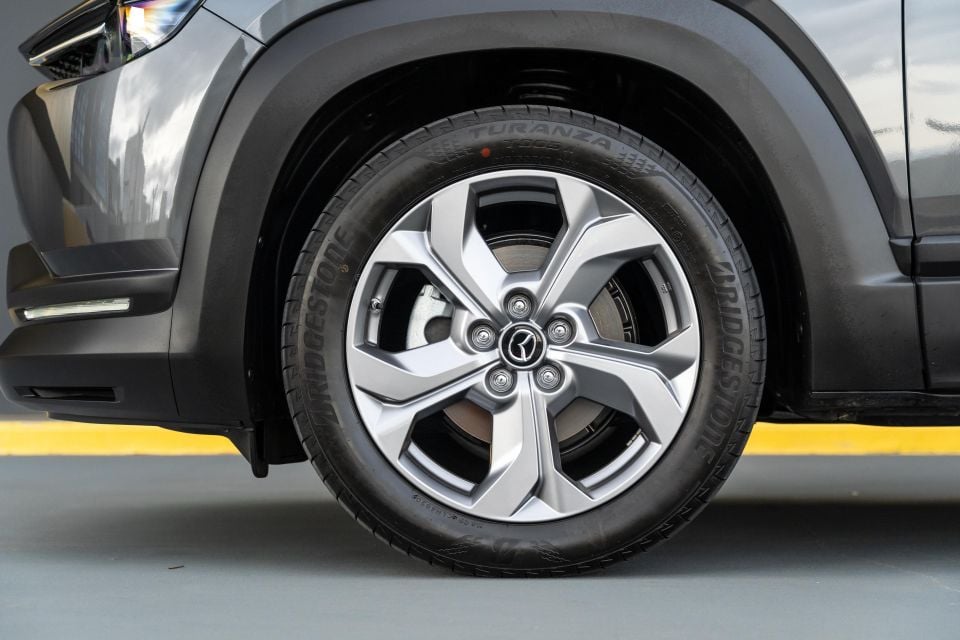
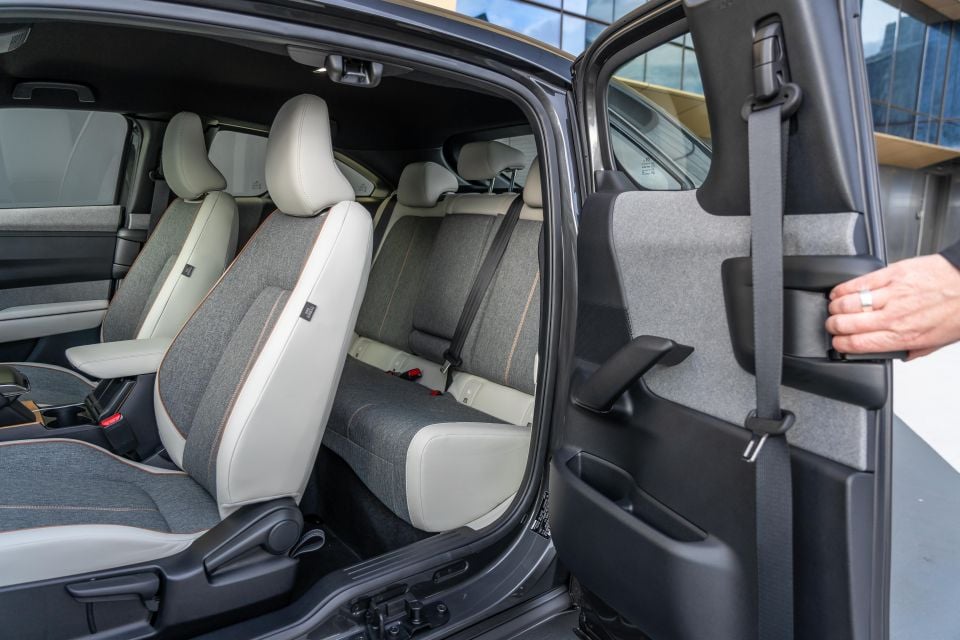
Buy your new car without the stress. It's fast, simple and completely free.

Great service from Travis and team, second time I have used this business would not hesitate to recommend them to anyone
Craig C.
Purchased a Ford Ranger in Sunshine Coast, QLD
CarExpert helped Craig save thousands on his Ford Ranger, now let us save you on your next new car.
Find a dealMazda doesn’t really do stripped-out base models in a conventional sense with its newest products, because it’s trying to pitch itself as a little more upmarket.
All grades come with rear-opening back doors, 18-inch wheels, auto-folding mirrors, LED headlights, rain-sensing wipers, climate control with touchscreen, cloth seats, a head-up display, an 8.8-inch infotainment screen with rotary controller, Apple CarPlay, Android Auto, satellite-navigation, digital radio, and button start.
The Touring adds a proximity key fob, auto-dimming side mirror with memory, sexy grey/white ‘Maztex’ and fabric seats, powered seat adjustment, and illuminated vanity mirrors. The proximity key fob alone makes the mid-range worth the extra spend.
Stepping up into the Astina gets you luxury add-ons such as adaptive headlights, a sunroof, brown leather, a 360-degree camera, and a 12-speaker Bose audio system in place of the standard eight-speaker setup.
MORE: 2021 Mazda MX-30 price and specs

The 2021 Mazda MX-30 has a five-star ANCAP safety rating based on testing carried out by Euro NCAP in 2020.
It scored 93 per cent for adult occupant protection, 87 per cent for child occupant protection, 68 per cent for vulnerable road user protection, and 74 per cent for safety assist.
Atop 10 airbags, the MX-30 features active safety equipment including autonomous emergency braking front and rear, rear cross-traffic alert, blind-spot monitoring, active lane-keeping assist, and active cruise control.
Opting for the Astina – or the $1500 Vision Technology package on Evolve or Touring variants – adds front cross-traffic alert, front parking sensors, driver monitoring, and a nifty 360-degree camera.

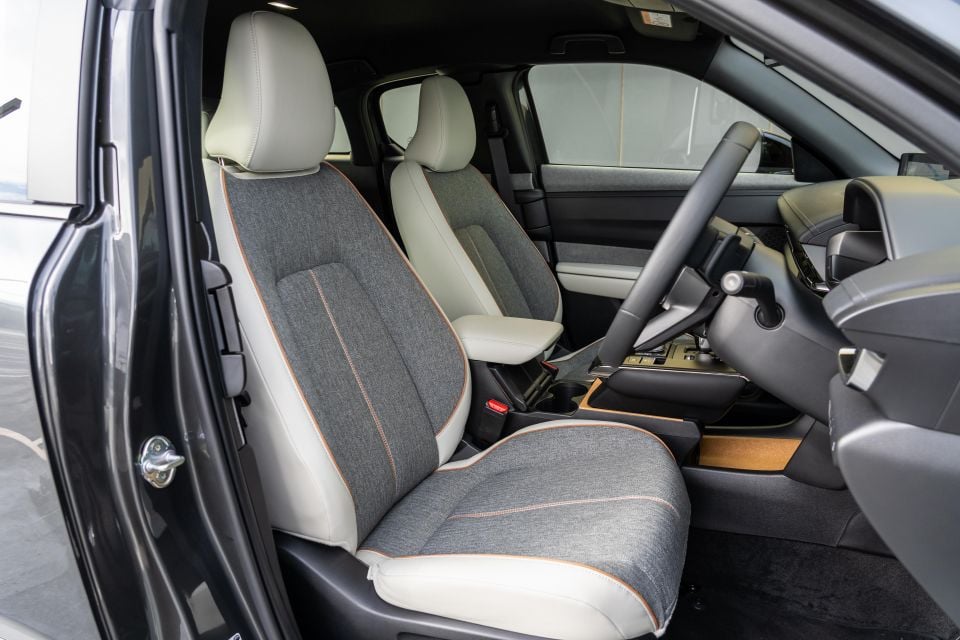
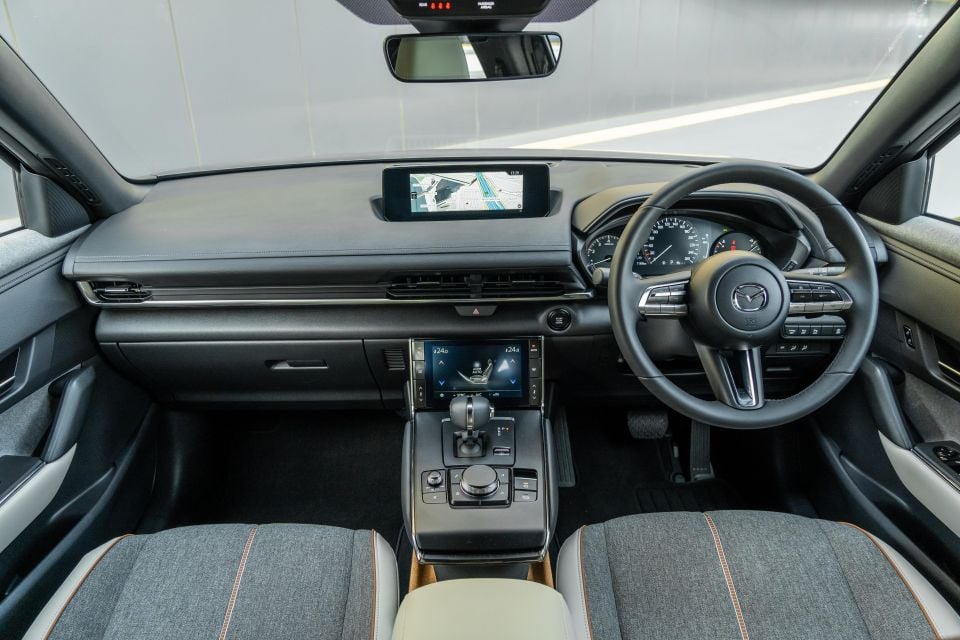
The car’s best feature its cabin, which is a real delight with spot-on ergonomics and a nicely elevated driving position.
Much is familiar from the CX-30 or Mazda 3 including the thin-rimmed steering wheel, centre screen with rotary controller, driver’s TFT instruments with minimalist interface, projecting head-up display, and most switches and buttons.
This is no bad thing, since both feel like premium products.
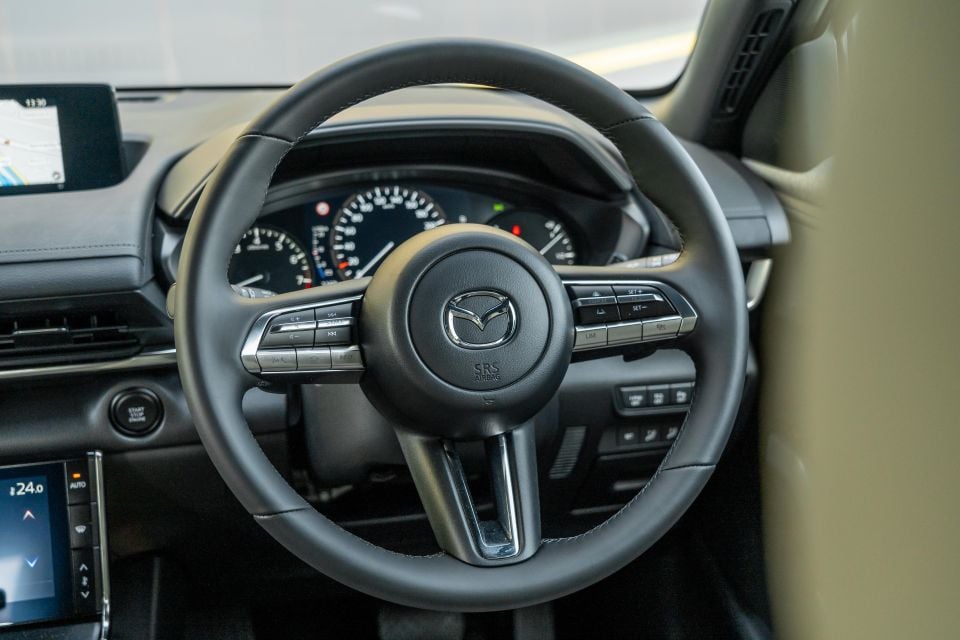
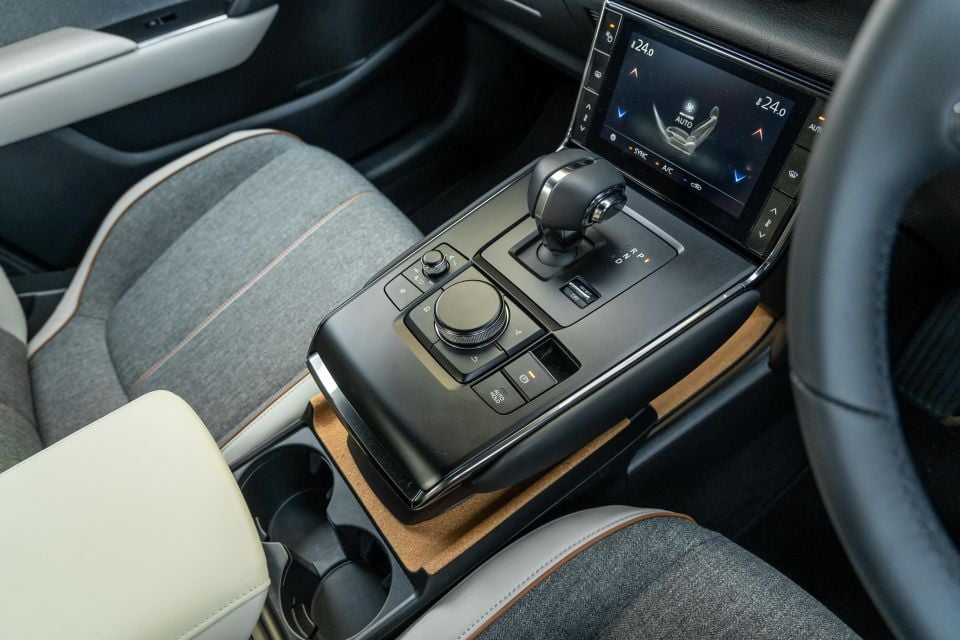
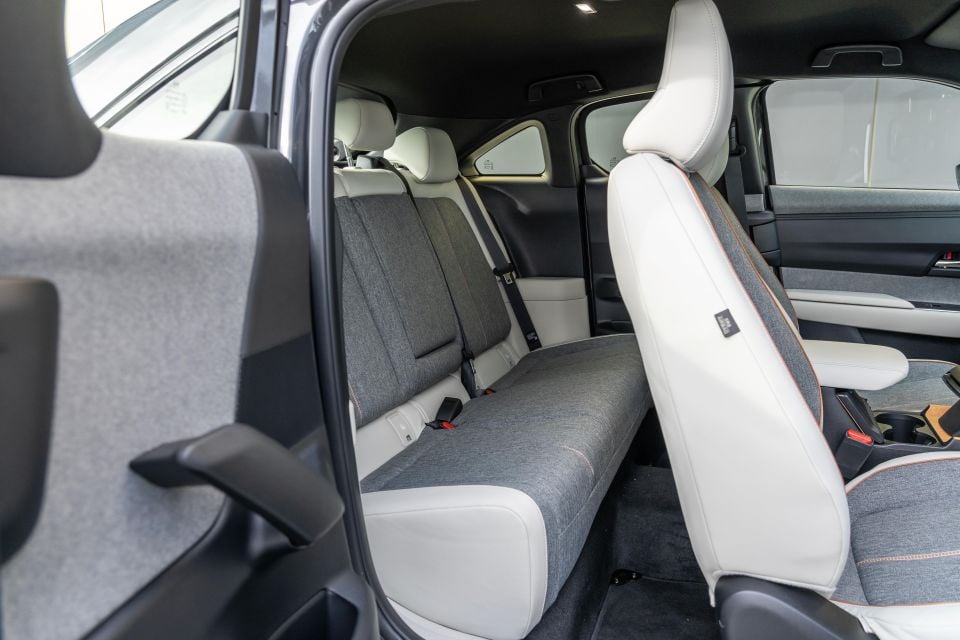
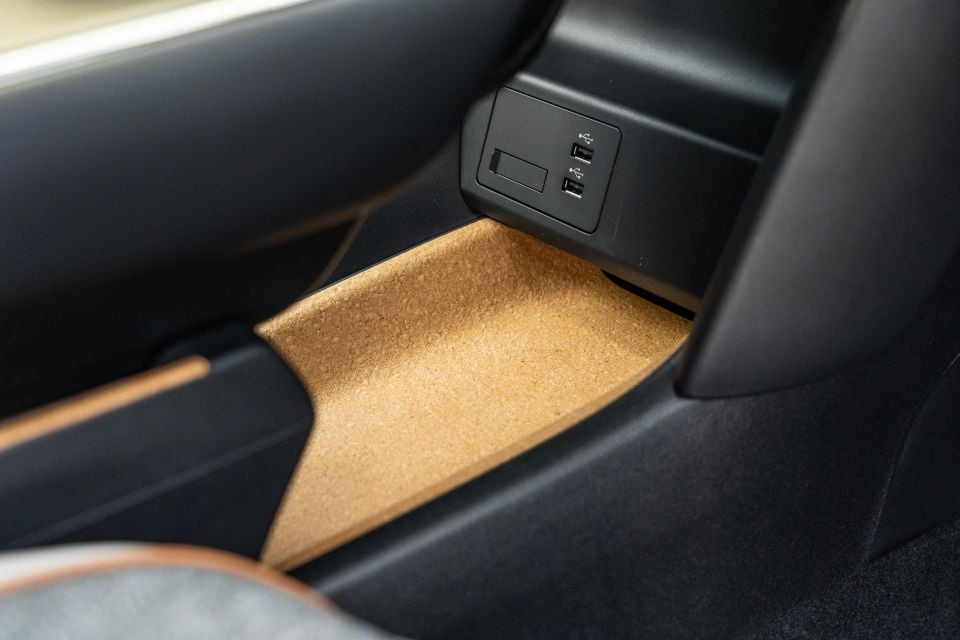
But the MX-30 offers new-to-Mazda features such as a touchscreen to operate the climate control, and a shift-by-wire gear knob fitted above a ‘floating’ centre tunnel. The Touring’s white synthetic leather and grey fabric seats with brown piping look Scandinavian.
Sustainable cork is found all over the transmission tunnel, seat materials use recycled thread and are not washed in solvents, and the stylish fabric-like door trims are made from repurposed PET bottles. It’s a bit BMW i3-like in this regard, too.
The colour palette is bright and airy, and the tactility of all the knobs and dials first-rate. Plus Mazda’s latest infotainment system is a huge update on its older cars in terms of user interface, processing and graphics.



Storage options include a decent centre console, a hidden section below the gear shifter, and moderate door bins. There are also two cupholders that are covered by rather flimsy cork-and-plastic tabs – a rare blemish I’d say.
Entry to the back seats comes with the rear-hinged back doors that can only be opened in sequence after the front ones, by pulling a plastic handle. The lack of a b-pillar creates a striking impression of space and a cool side profile.
But much like a coupe, the sloping roof reduces headroom and the small side windows hinder outward visibility, and access into the back row past the set-back front seats is much tighter than in a CX-30 with the same dimensions but a more conventional layout.
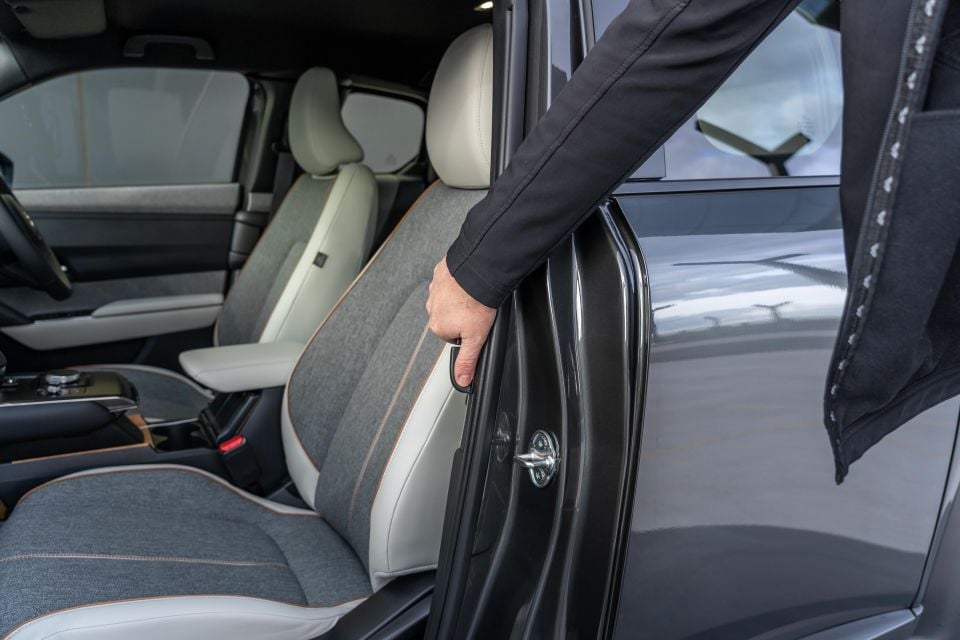

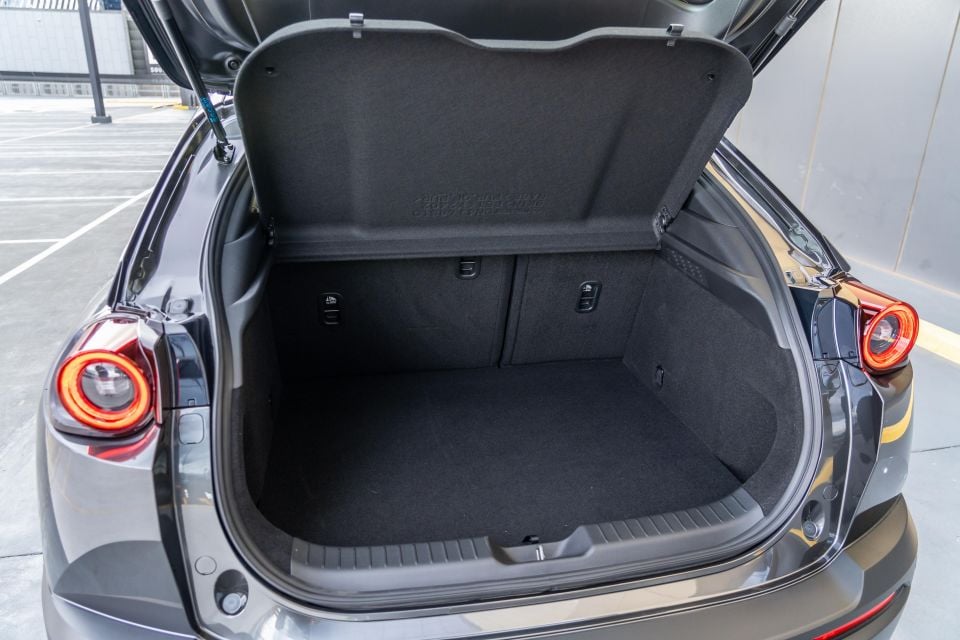
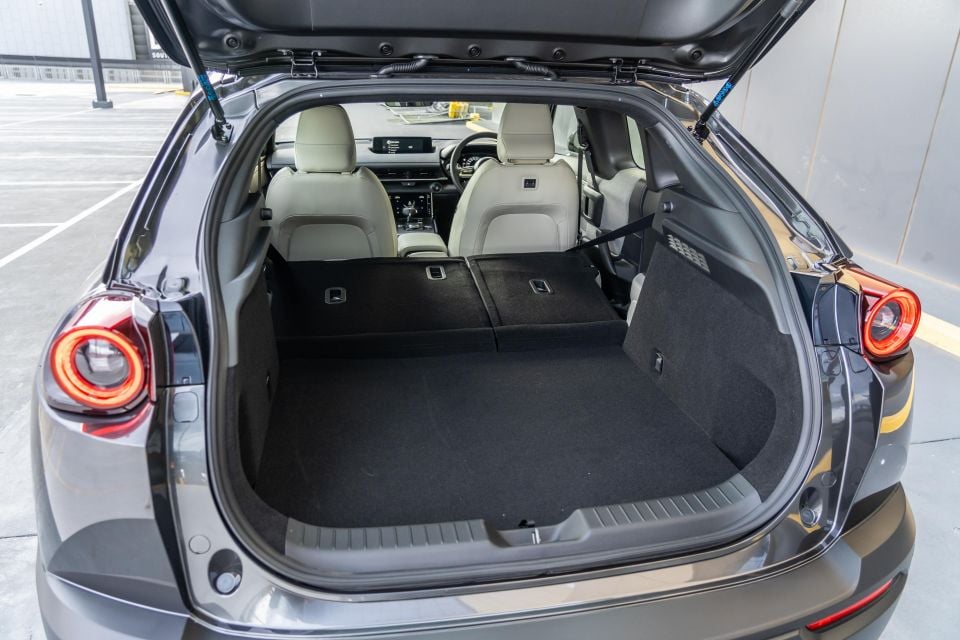
Even the quite pokey Mazda 3 hatch offers friendlier back access, ditto the similarly strangely-designed Toyota C-HR.
I’d consider the MX-30 a car for a couple with readily accessibly back-seat storage space.
At 311 litres, the MX-30’s boot space is down 6L on the CX-30.
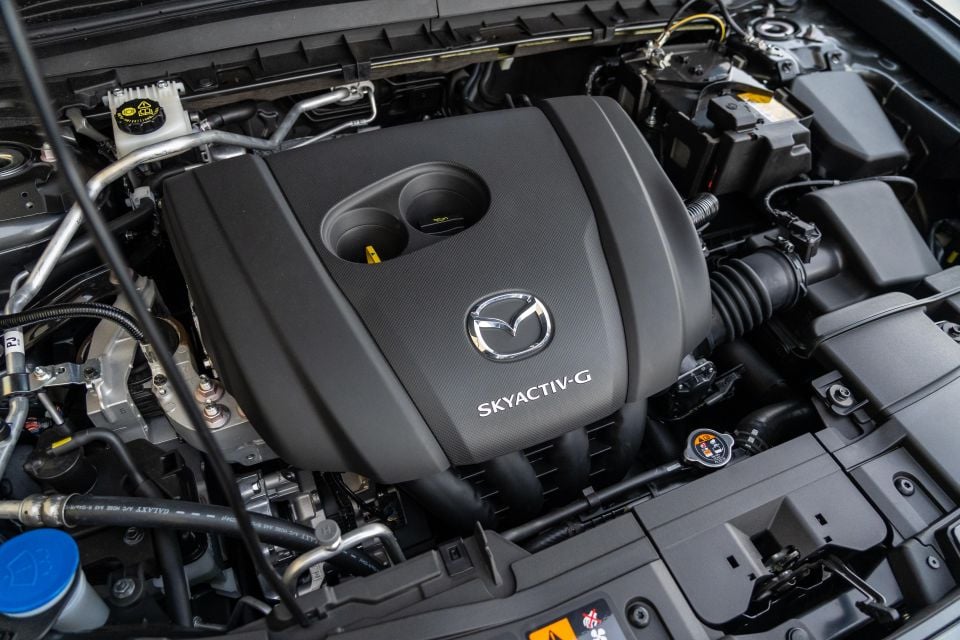
Mazda calls the MX-30 an M Hybrid, but don’t believe the hype.
It’s the same 2.0-litre Skyactiv-G naturally-aspirated petrol engine (114kW of power at 6000rpm and 200Nm of torque at 4000rpm) used in entry versions of the Mazda 3 and CX-30, mated to a six-speed automatic and front-wheel drive.
But it’s paired with a belt-driven integrated starter generator (ISG) and small 24V lithium-ion battery. The system captures braking energy and redeploys it, to smooth out and extend the stop/start system and add a tiny torque boost.
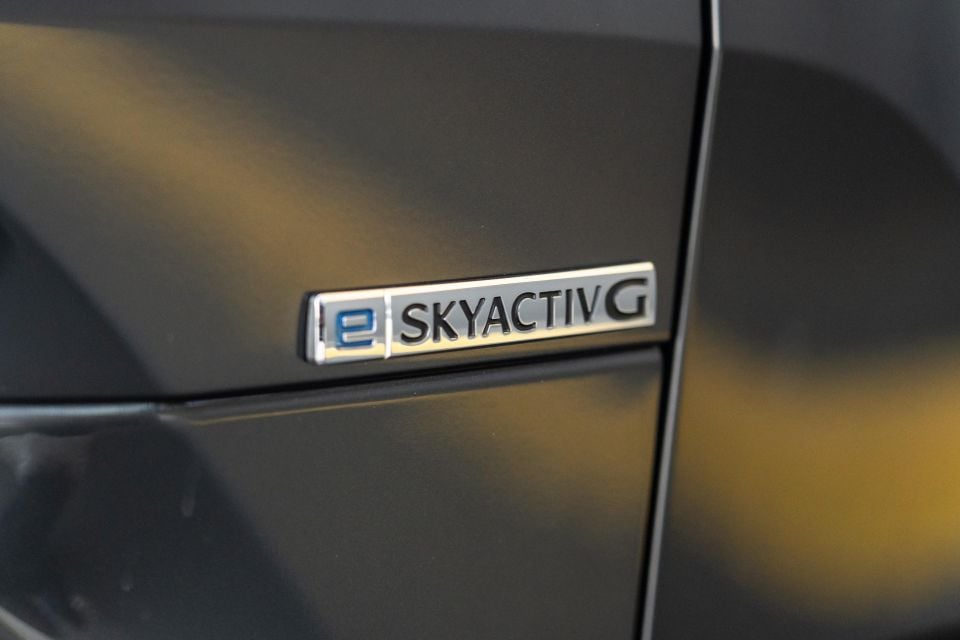
Mazda claims combined-cycle 91 RON fuel economy of 6.4 litres per 100km on the combined urban and highway cycle.
A roomier CX-30 with the same 2.0-litre engine and six-speed transmission, but without the 24V battery and ISG, uses an almost identical 6.5L/100km.
Therefore it’s the mildest of mild-hybrid systems, even milder than the 48V systems favoured by European brands.
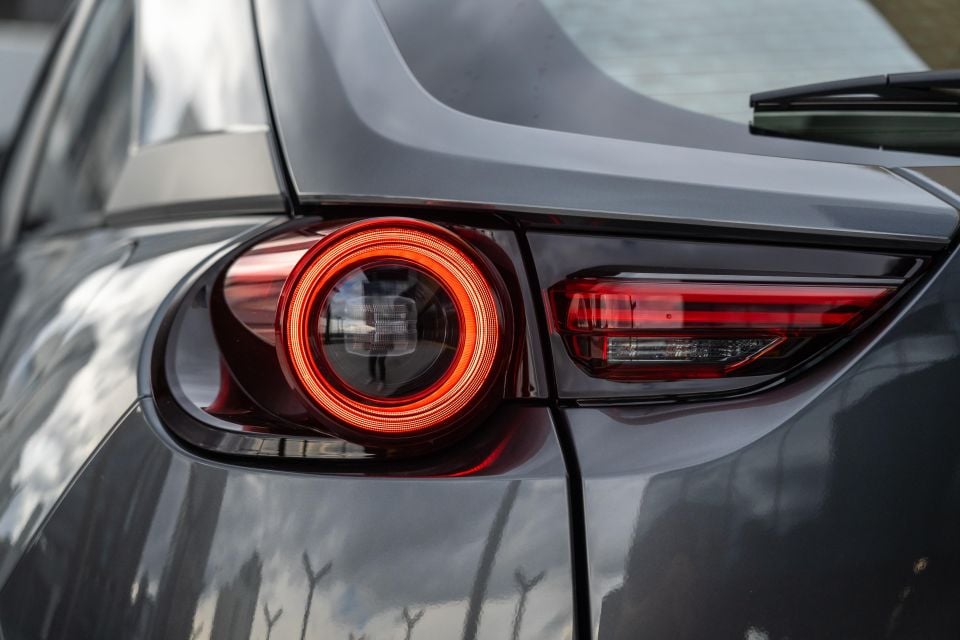
For context, Toyota C-HR with a more conventional hybrid system (a larger capacity battery and supplementary drive motor that allows low-speed electric propulsion) uses 4.3L/100km.
It seems unusual that Mazda didn’t fit its Skyactiv-X supercharged and spark-guided compression-ignition drivetrain – as used in the flagship Mazda 3 and CX-30 – which offers 16 per cent more power, 12 per cent more torque, and uses 6.0 per cent less petrol.
Mazda will diversify the MX-30’s options soon, with the aforementioned short-range EV due in August, and a rotary engine range-extender hybrid expected in 2022.
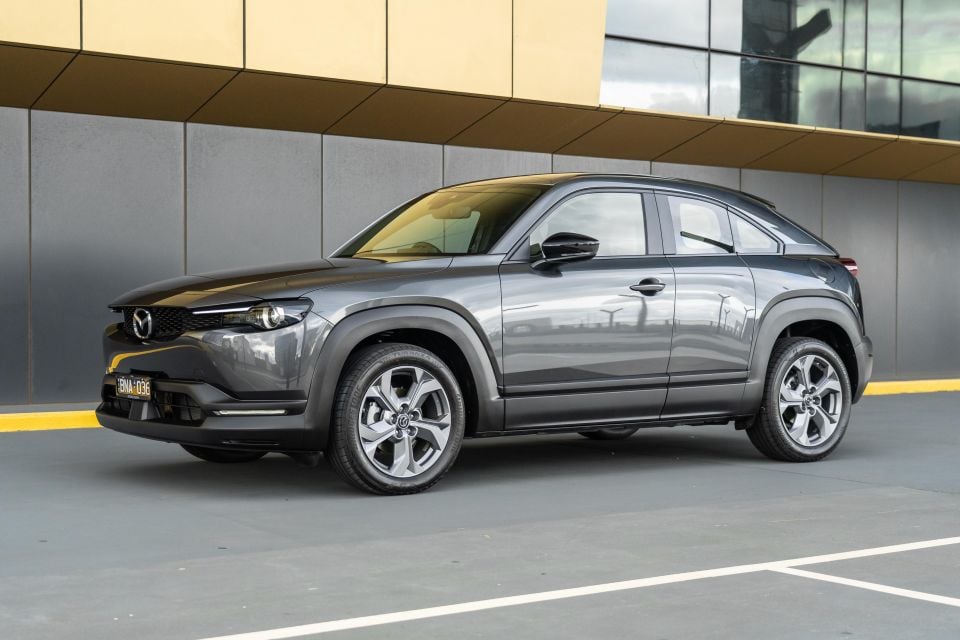
The driving position is excellent: there’s plenty of seat adjustment, the steering wheel is delightful, the HUD helps you keep your eyes on the road, and the slightly elevated position helps outward visibility.
The engine is a bit disappointing though. Aside from the stop/start kicking in just before you come to halt (sometimes), it feels like any other 2.0-litre naturally aspirated petrol engine might.
This means quick throttle response and a willingness to rev to get to the engine’s ideal power and torque band, but not a heap of low-end surge and a pronounced diminishment in refinement when you’re really throttling.
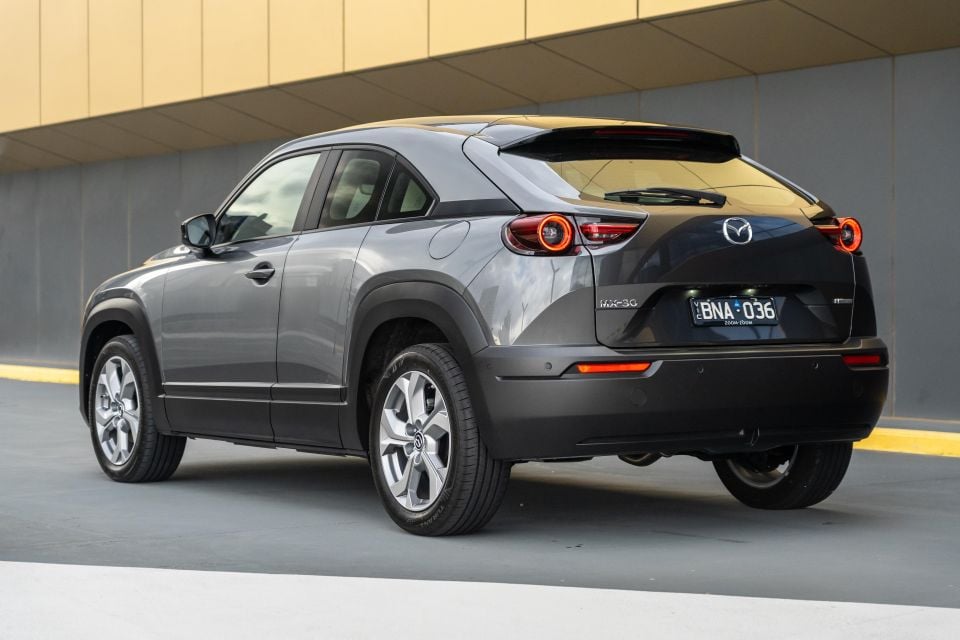
The six-speed automatic is well-calibrated, and the rocker switch-activated sports mode encourages it to kickdown with more aggression and hang onto lower ratios for a bit longer.
I managed a zero to 100km/h sprint time of 10.05 seconds, which is modest. My fuel consumption in the real world on a combined cycle was 7.5L/100km, which is acceptable for an ICE car but nothing to write home about for a ‘hybrid’.
To Mazda’s credit it rides and handles very well, much like the closely related CX-30 and Mazda 3. Mazda’s suspension allows some up and down body movement, but it’s quite natural feeling and engaging, and controlled.
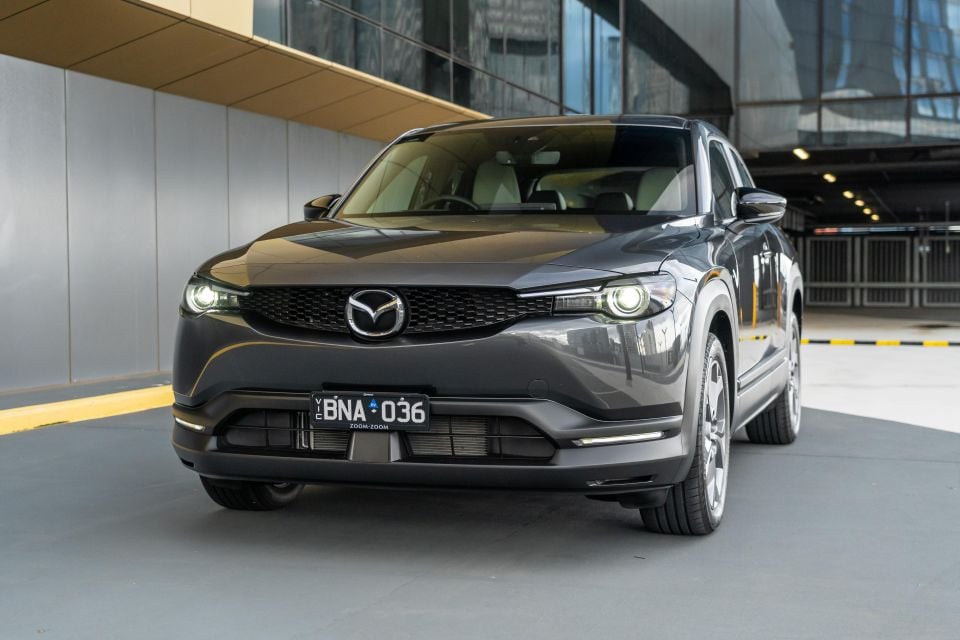
It irons off speed bumps and expansion joint quite well, has light but direct steering, and settles after undulations. Its body control against cornering forces is also encouraging even over lumpy surfaces, despite the rear torsion beam.
It is also exceptionally refined, with my 67 decibel average over b-roads at 100km/h better than most non-luxury vehicles. A Toyota C-HR on the same strip let in 72dB of tyre and wind noise, for context.
Downsides beyond the uninspiring engine? Big rear blind spots are never ideal, and the cross-traffic alert with braking is very sensitive: It’s a bit annoying when you’re edging out of a car bay and it keeps beeping and stopping. But I don’t know of a solution to this.
Mazda provides a five-year, unlimited-kilometre warranty and a capped-price servicing program covering the first five years or 50,000km.
It’ll cost a total of $1942 for five services at intervals of 12 months or a short 10,000km, not including extra service items like brake fluid or cabin air filters.

Where expert car reviews meet expert car buying – CarExpert gives you trusted advice, personalised service and real savings on your next new car.
Let’s be honest, this is a car that’ll sink or swim on the back of aesthetic appeal. I think the latter might apply here.
No it’s not particularly practical, this MX-30, nor is its fuel economy worthy of the hybrid label. More poke wouldn’t go astray either.
But it’s very likeable because it diverges from the norm in so many ways, and thereby offers something quite unique for $40,000.
It turns heads, the cabin is lovely, the handling agile, and the comfort and refinement levels when rolling are respectably premium. Just don’t call it a hybrid.
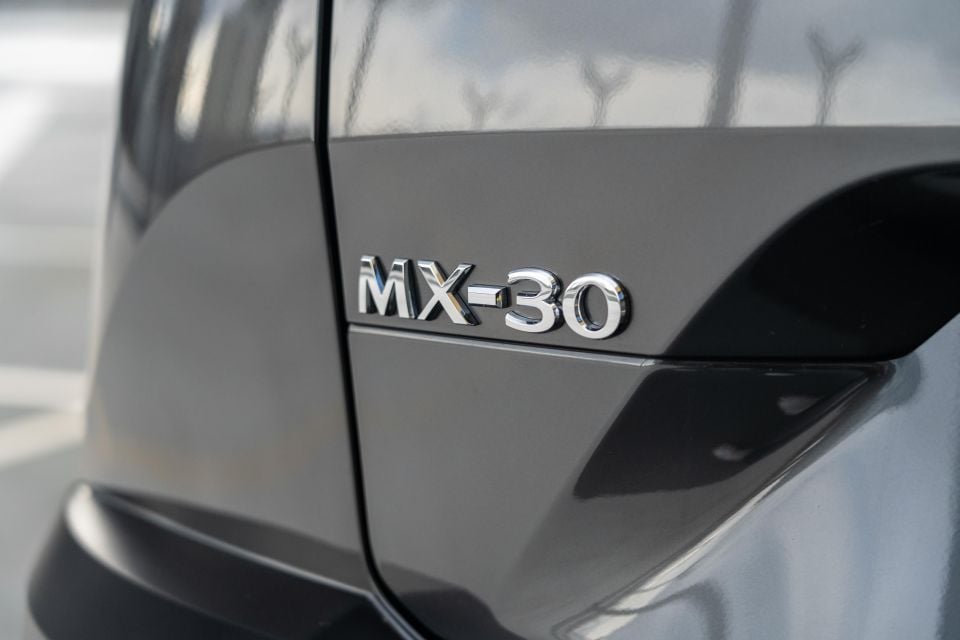
Click on the images for the full gallery
Where expert car reviews meet expert car buying – CarExpert gives you trusted advice, personalised service and real savings on your next new car.


William Stopford
14 Minutes Ago


Ben Zachariah
1 Hour Ago


Derek Fung
2 Hours Ago


Matt Campbell
8 Hours Ago


William Stopford
1 Day Ago


Josh Nevett
1 Day Ago